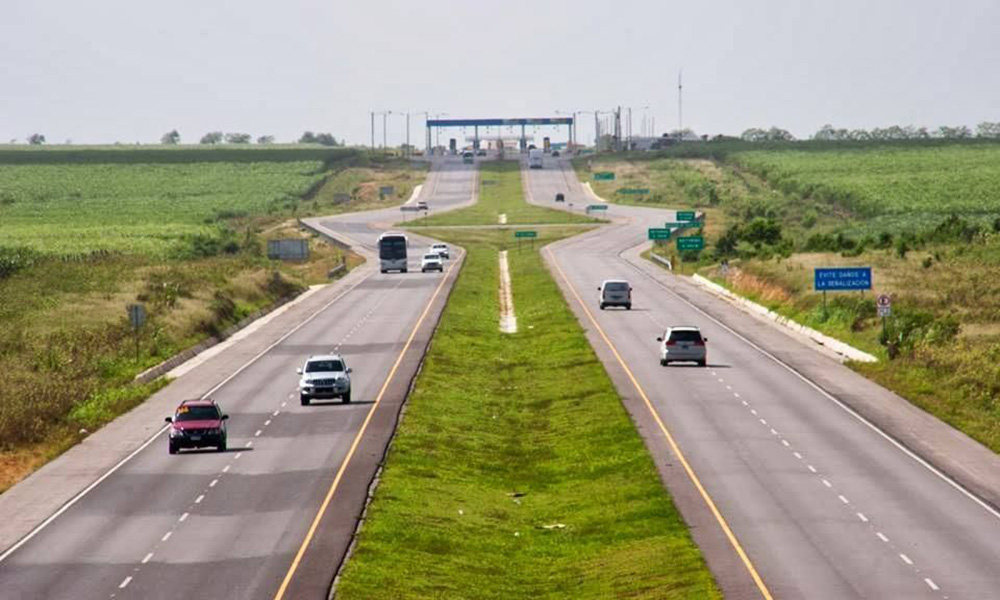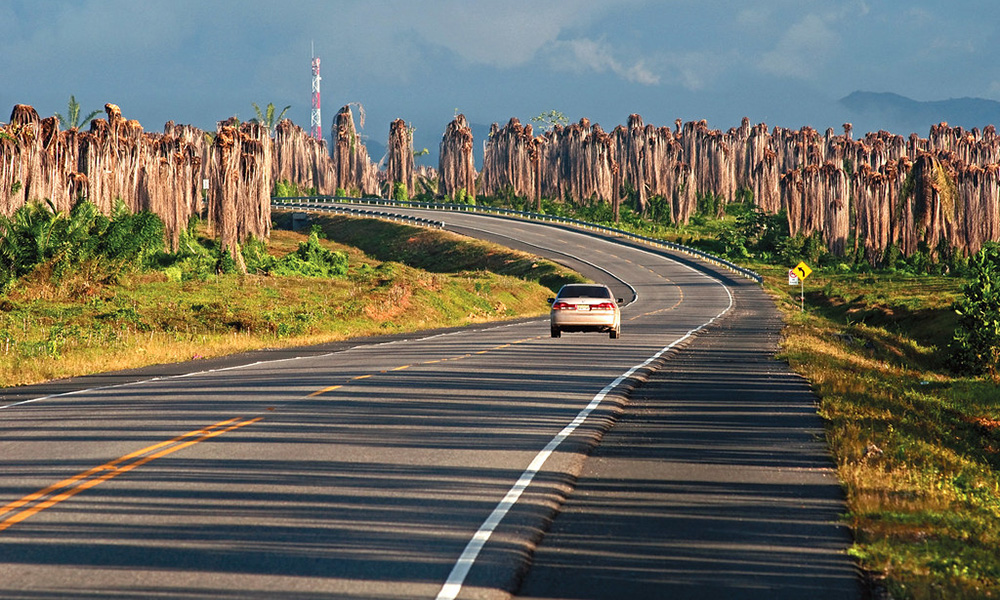Trunk, tertiary and secondary roads allow connecting to the four cardinal points without difficulties
The Dominican Republic has an important terrestrial communication network, which allows it to connect the four cardinal points without major difficulties. This network is made up of trunk roads, tertiary roads and secondary roads.
The country currently has 1,395 kilometers of trunk roads, 1,620 kilometers of tertiary roads, and 3,412 kilometers of secondary roads.
The kilometers of local roads, trunk roads and sidewalks total 60,000 kilometers. A trunk road, or trunk expressway is a main route, generally connecting two or more cities, ports, airports and other places, which is the recommended route for long-distance and freight traffic. Many major highways have separate lanes on a dual carriageway or are expressway standard.
Composition
The trunk road network of the national geography is made up of seven highways that have a total of 1,395 kilometers. The longest of them is number one (Autopista Duarte), with 261.10 kilometers, and the shortest is 6 de Noviembre or number six, with 21.30 kilometers. Highway number one has an extension of 261.10 kilometers and starts in Santo Domingo under the name Autopista Duarte. It continues to the northwest and at kilometer 25 it crosses Pedro Brand, avoids Villa Altagracia and borders the cities of Bonao and La Vega, to cross Santiago towards Navarrete, to continue northwest, until it ends in the center of the border city of Montecristi.
Highway number two starts in the capital as the Sánchez highway, crosses Haina, San Cristóbal and Baní, continuing to Tábara Abajo, in Azua, where it turns north and continues through San Juan de la Maguana. It ends in Elías Piña; its length is 222.43 kilometers.
Highway number three begins in the Santo Domingo Este municipality with the name Autopista Las Américas and at Boca Chica it becomes the Autovía del Este. The Autovía del Ese borders San Pedro de Macorís and La Romana, and at the level (at the height as it is popularly said) of the Santa Rosa extension it becomes the Autopista del Coral, which continues towards the Punta Cana airport, completing 259.62 kilometers and avoiding touching the city of Higüey. Highway number four, or Mella highway, completes 193.97 kilometers and begins in the municipality of San Rafael de Yuma.
It crosses the cities of Higüey, El Seibo and Hato Mayor, where it turns south; bypass the city of San Pedro de Macorís to continue to Sabana Larga avenue, in the Santo Domingo Este municipality.
The Galleys
Highway number five or Luperón is 281.58 kilometers long and begins in Las Galeras de Samaná. It borders that city to the south and becomes the Nagua-Samaná Highway, crossing the center of the city of Nagua, first, then Puerto Plata until it ends in Cofresí, where it becomes the Navarrete-Puerto Plata Highway. Highway number six or November 6 is the shortest of the trunk roads, it is only 21.30 kilometers long. It begins in Herrera, Santo Domingo Oeste, and extends to the southwest, avoiding San Cristóbal, until kilometer 5, where it joins the Sánchez highway.

Hydraulic works, call centers and the military
Highway number seven or Autopista Juan Pablo II, starts at Los Palmeros avenue, which is parallel to Autopista Las Américas, at kilometer 22, and continues until it crosses Los Haitises National Park, avoiding the cities of Monte Plata and Sabana Grande. from Boyá, to finish at the Rincón de Molinillos Crossing, Samaná.
A numerical cut made to the year 2019 indicates that the Dominican Republic has, throughout its road network, more than 2,600 hydraulic works between bridges, speed bumps and culverts. According to official data, the country has 14 tolls in its trunk network, 10 administered by RD-Vial and four concessionaires.
It has a road assistance service on the trunk road network, made up of 21 strategic points equipped with ambulances, mobile workshops, vans, military personnel, communication and a call center.








